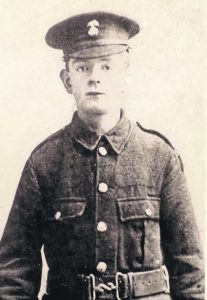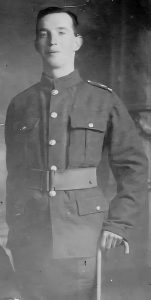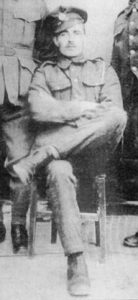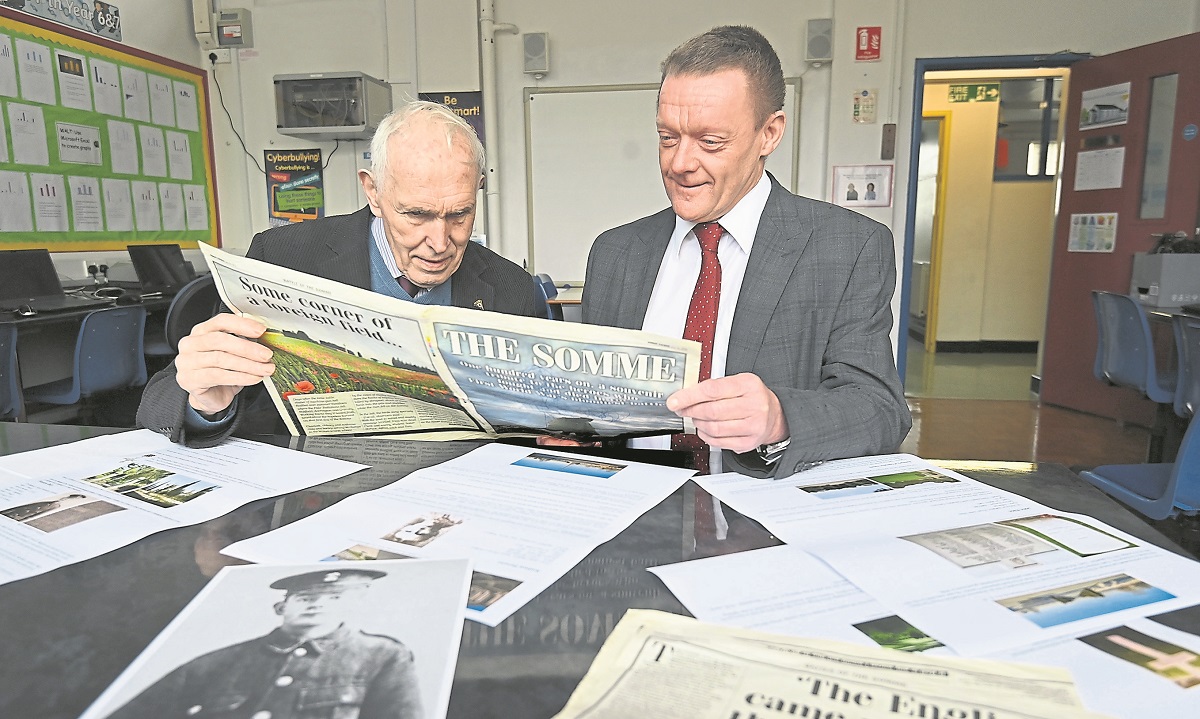With each passing year, every unwritten book of modern history gets that bit harder to write.
People die. Details fade. Stories slip into obscurity.
As such, as the hand of time ticks on, the matter of chronicling our past becomes evermore urgent.
One man who understands this better than most is Sam Dennison.
For the last two years, Mr Dennison, who happens to be the Principal of McClintock Primary School, Seskinore, has been researching and recording the fascinating story of Drumquin’s role in WW1, WW2 and the Korean War.
With a little help from Drumquin Historical Society (DHS) and Drumquin Through The Years (a community social media forum), Mr Dennison has impressively put together almost 100 pages of personal information, pictures and accounts of local people who fought in some of the worst wars in human history.
But he needs your help to get over the line.
“I know people will come up to me after the book is published and tell me about all the people I missed out. But I want that list to be as small as possible,” laughed Mr Dennison.
When I last spoke with the amateur historian last November, he – along with chief researcher and chairperson of DHS, Seamus Gormley – had managed to collect information relating to around 20 young men who had fought and died in WW1, WW2 and the Korean War.



Since then, the two boys have been very busy.
“We have found out about quite a few more Drumquinians who paid the ultimate sacrifice, most of them losing their lives during the two world wars.
“It turns out that getting information on those who died is the easy part. Generally speaking, being killed in battle means a gravestone or memorial panel near where a soldier died, which means names, dates, divisions, all of that.
“What actually proves a bigger challenge is finding out about those who fought and survived. However, thanks to the help of local people, we have succeeded in unearthing quite a bit of information about soldiers who managed to make it home too,” said Mr Dennison.
One of the survivors who will be memorialised in the book is a man named Arthur Sharkey.
“Sharkey was one of the unlucky guys who, seeking a better life, risked everything by emigrating to America, only to be conscripted into the army soon after getting off the boat,” explained Mr Dennison.
“We were unable to find out if he actually served or not. But we know that he was sent to Europe in July 1916 and honourably discharged in September.
“He was originally from near where I live, but he died in Queens, New York.
“We have pictures of him in his uniform,” said Mr Dennison.
The book also tells the story of two young men from Tattyreagh who, after undertaking a perilous Atlantic crossing, soon found themselves being issued with a gun and boots
“The funny thing about these two guys was that they ended up doing training drills in Seskinore Forest along with the American Army before being sent to the front. Imagine traveling halfway across the world only to end up being sent back to do military drills in a a forest only a few miles from your parent’s house,” said Mr Dennison.
But the material for the book is not exclusively the sort of factual stuff you find during long days spent digging through dusty archives. There are also lively personal accounts and vivid reminiscences.
“As part of my research I sat down with a local 87-year-old man, Foncie McCanny, who told me the story of his father came to have a two inch piece of shrapnel lodged in his skull,” said Mr Dennison.
The story goes that a shell dropped beside Foncie’s father’s unit, killing his comrade instantly and leaving a large chunk of metal embedded in Mr McCanny’s skull.
“Luckily enough though,” said Mr Dennison, “Foncie told us that it had no noticeable impact on his father’s cognitive abilities.”
Also detailed in the book is the little-remembered military career of famous Drumquin poet, Felix Kearney.
“Not too many know this, but Felix joined the Scottish Cameron Highlanders Regiment when working as a miner in the Glasgow/Renfrew area.
“He joined at 28 and served in both France and Belgium during WW1.
“He was wounded in action on the October 6, 1918, and, because of his ‘bullet wound in upper arm’, carried out the remainder of his service as a cook in the officer’s mess,” said Mr Dennison.
The stories go on and on. Not all of them are comprehensive, but each is more intriguing than the next.
“I suppose what I would like to do is issue a last call for information before I finally stop working on the book. If you know any information connecting Drumquin to any of these three wars, please get in touch with me at the email address samdennison@btopenworld.com.
“I am willing to listen or look at anything, whether it is a concrete military record, an unidentified photograph, or some speculative family history that you can only half-remember.
“Sixmilecross and Castlederg already have their war history recorded. I want to make Drumquin’s as full and colourful as it can be,” concluded Sam.







